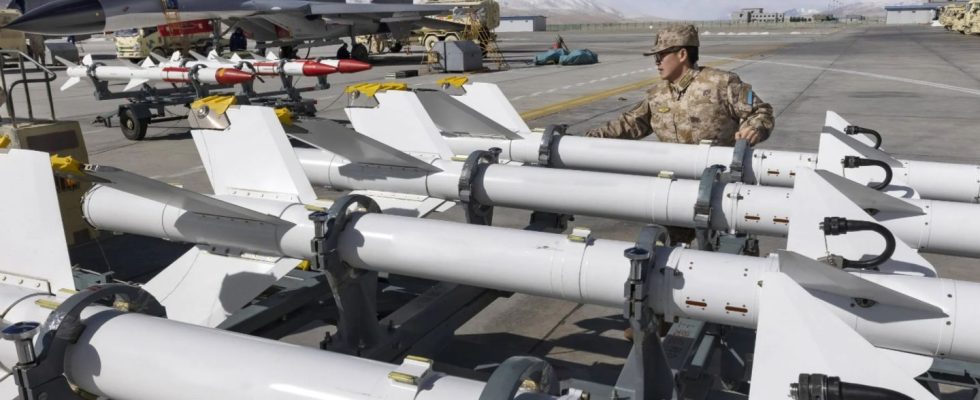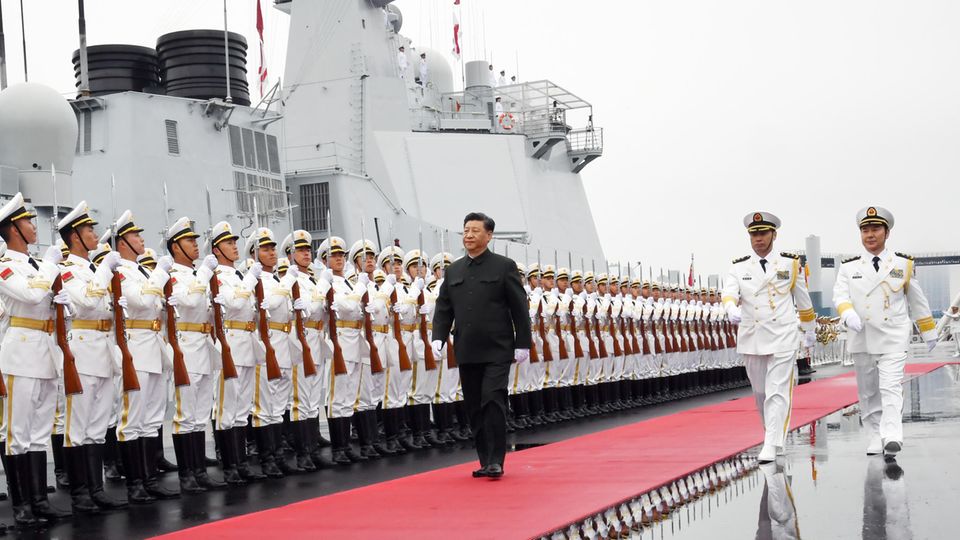Military technology
Armament without people: China shows fully automated missile factory
Assembling missiles during a PLA exercise
© China Military Online
The West is amazed at Russia’s arms industry, but the real challenge is China, says a study from the USA. In a video, Beijing shows how advanced production is: no more people work in rocket production.
Russia’s industry has been criminally underestimated by Western experts, but how is the West supposed to survive a confrontation with the number one industrial power? The current study “China Outpacing US Defense Industrial Base” by the Center for Strategic and International Studies (CSIS) shows the growing disproportion between China and the USA when it comes to arms production – for example in shipbuilding. China’s shipyard capacity is 230 times that of the United States.
Civilian and defense production are not separated
There is also a special feature of Chinese armaments: the civilian and military sectors are often not separated, but rather permeable. “The potential of China’s defense industry is likely even greater than military spending and domestic defense industry suggest. China is pursuing a strategy of military-civilian fusion,” the CSIS report said. Shipyards that make container ships also build warships. In the event of a voltage, a large part of the civilly used capacity can be transferred to the military. The days when China could only build simple models are long gone. Liquefied gas tankers are the most complex civilian merchant ships. Here China has a market share of more than 30 percent. The irony is that the high demand for LPG carriers is due to the Russia sanctions, which are pushing Chinese shipbuilding capacity. Civilian roll-on roll-off ferries are designed to also serve as landing craft. And the fishing fleet also has military importance. The same proximity exists in the aviation industry and drone production.
High pace of innovation
The collaboration between universities, the civil and military sectors leads to a high pace of innovation. It takes China less than seven years to develop a project and produce the corresponding system. In the USA there are 16, according to the study.
Beijing is acquiring high-end weapons systems and equipment five to six times faster than the United States. The purchasing power of the defense yuan is far higher than that of a defense dollar or euro. This is due to the peculiarities of the military-industrial complex in the West, including the penchant for special, perfect systems. These “boutique weapons” with “gold-edged solutions” attempt to achieve what is technically feasible and lead to enormous costs and long delays. Performance also often falls short of original expectations.
Dynamic Missile Program
The rocket program in China is developing particularly dynamically. Beijing was the first country to introduce a hypersonic glider. “The Chinese arsenal is formidable and consists of a rapidly growing inventory of ballistic missiles and a variety of cruise missiles, the production rates of which are difficult to determine. China has the most active and diverse ballistic missile program in the world,” it said. The Western arms industry still operates in better manufacturing mode. Because of the small quantities, processes such as those common in the automotive industry cannot be implemented.
A few weeks ago, the Chinese broadcaster CCTV gave an insight into an arms factory that produces components for cruise missiles and rockets. There are no people to be seen in the entire hall, the system is fully automated – just like solar panels are manufactured. These productions lead to higher quality and less waste. Comments on the clip mention production figures of 1,000 rockets and cruise missiles per day – when the system is started up. That is absurdly high and unlikely. In any case, the capacity of the factory cannot be estimated from this small section. But one thing will be true: the plant is designed for far higher production than is required in peacetime. Here, planning is carried out in advance for the event of a voltage drop. Fully automated production also means that this factory can work 24 hours 7 days a week without any problems.
Missiles decide Taiwan conflict
Several simulated conflicts – wargames – around Taiwan have shown that rockets and cruise missiles will decide the conflict. The report succinctly states: “China’s ability to produce large quantities of missiles, particularly advanced hypersonic missiles, will be a source of strength.”
Source:CSIS





